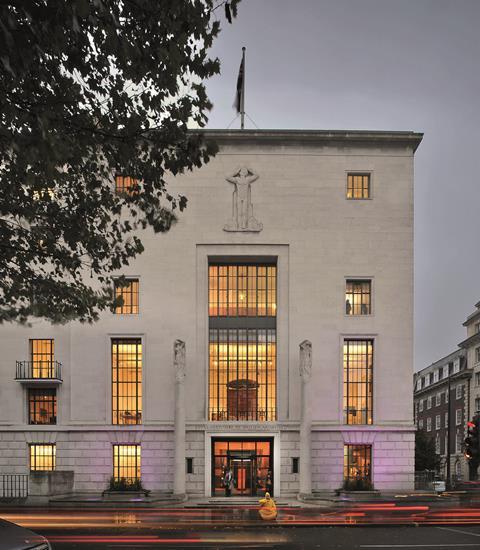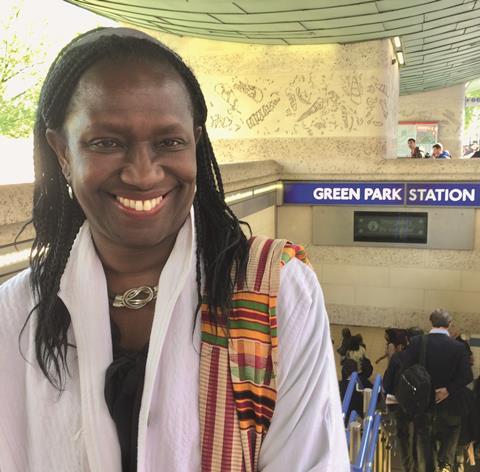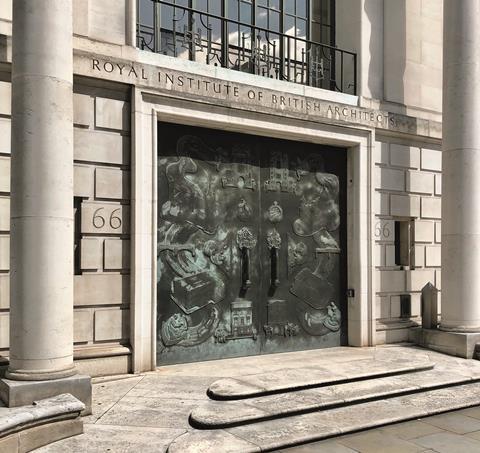Many have tried to change the way the RIBA operates and many have come away bruised. Some even question what the point of the institute is. And yet, when a new president takes over next month, the entire profession will be hoping he can get the august body back on course. Elizabeth Hopkirk reports

Shortly before sunset on a chilly March evening last year, a privy counsellor passed through the gates of Buckingham Palace brandishing a bundle of papers to be approved by the Queen. Among them was an application to amend the RIBAтАЩs royal charter, a request only granted four times in the 183 years since William IV conferred the crownтАЩs prestige on the institute.
It was an archaic formality, though a legal necessity, and it represented тАУ RIBA insiders hoped тАУ the last step on a long journey to reform. That night they could have been forgiven for thinking they had successfully steered the stubborn beast to the dawn of a new, modern age.
Yet privately some might have felt an uneasy sense of foreboding. That day supermarkets had begun rationing food in the face of shelf-emptying panic and within a week the prime minister would order schools to close and the over-70s тАУ the monarch included тАУ to hunker down.
My membership fee is being spent on lawyersтАЩ fees for some internal spat I am not the least bit interested in. I object to that
RIBA member
Rather closer to home, four days earlier the RIBAтАЩs president, Alan Jones, had approached its chief executive, Alan Vallance, about a very personal matter. Exactly what passed between the two men is a matter of disagreement but Jones is understood to have disclosed an intimate extramarital relationship that had resulted in both him and the RIBA being subjected to some kind of blackmail attempt.
This was reported to the police and the Charity Commission тАУ but also to the press. Jones was forced to take a 10-week leave of absence before issuing a formal apology and resuming his post. The police closed the case and the commission is satisfied to keep a watching brief on how the institute manages its affairs.
The papers, however, had a field day, with the Daily Mail dispatching a reporter to the doorsteps of some of the protagonists. Since then the institute has been trying to keep the lid on a simmering feud тАУ nicknamed the War of the Alans тАУ which finally erupted into the public eye last month with one resignation, myriad claims and counterclaims and briefings from both sides.

The RIBA revealed it had appointed two barristers and launched six investigations to try to resolve matters, and the chair of the new board, Jack Pringle, wrote to the council last month arguing they had a clear vision for the way ahead, thanks to the restructure. JonesтАЩ allies tried to draw attention to the number of senior staff who have left in recent months, on top of Sir Nigel Carrington, a lawyer who quit as chair of the trustees last year, before he had even started.
What exactly is going on at the RIBA? Can its reputation recover from this latest debacle? And, perhaps most importantly, what is its relevance in the 21st century, post-Grenfell, post-pandemic?
Certainly the fracas is unseemly for an august professional body, but it is not a huge surprise to RIBA watchers who need not cast their minds back very far to recall previous public embarrassments. Three years ago the instituteтАЩs then honorary secretary Kerr Robertson issued a presidential contender, Elsie Owusu, with a тАЬcease and desistтАЭ letter after she accused the RIBA of being institutionally racist and for speculating about VallanceтАЩs salary.

A previous candidate was тАЬoutedтАЭ as a would-be MP for the British National Party. And when a former president, Angela Brady, called for the Israeli architectsтАЩ institute to be ejected from the global architectsтАЩ union in 2014, a furious row broke out in the national papers, with one side accusing the RIBA of stepping well beyond its mandate and the other charging it with cowardice when it subsequently withdrew the motion.
Some of the embarrassments are beyond Portland PlaceтАЩs control but others speak of a foundational problem: that everyone has a different notion of what the RIBA should be for. Some ask whether they even need a body whose objects тАУ barely changed since the first iteration of that royal charter тАУ are тАЬthe advancement of architecture and the promotion of the acquirement of the knowledge of the arts and sciences connected therewithтАЭ.
That fusty definition has proved a bone of contention over the years, whenever a frustrated architect asks why more is not being done to advance architects and their business interests. тАЬOur hands are tied тАУ read the charter,тАЭ cry its staff and elected officials helplessly.
We need an institute that enables members to share ideas about best ways of working, using todayтАЩs technology to help advance architecture for the benefit of society
Simon Allford, incoming RIBA president
Others see it differently. Architect Ben Flatman, a ║├╔л╧╚╔·TV Design columnist, has accused the institute of being тАЬa relic from the past that has failed to address the fundamental dichotomy between being a learned society and representing the interests of its membersтАЭ.
Yet at the same time a senior member of the profession, founder of a venerable practice, said privately: тАЬThe RIBA has for too long been a trade union rather than a professional institute. I have high hopes that Simon Allford may make a change there. I was a councillor when Richard MacCormac was president and I became rather disillusioned when, despite his efforts, the local myopics prevailed.тАЭ
That is a frustration shared by almost anyone who has tried to get involved. Every incoming president says they are going to shake up the institute; few are remembered for making any real difference. Those who decide to take on the internal machine come away bruised; even those who serve on the innumerable committees or working groups describe it as тАЬexasperatingтАЭ.
тАЬItтАЩs a bit like the civil service: governments come and go but the civil service just keeps on trucking,тАЭ says Rob Fiehn, an architectural communications specialist who is co-curating this yearтАЩs RIBA Guerrilla Tactics conference for small practices. тАЬNo one ever talks about the president and chief executive тАУ thereтАЩs just a job to do,тАЭ he says, singling out the exhibitions and awards programmes for particular praise. тАЬPeople might ask, тАШWhat has the RIBA ever done for me?тАЩ but thereтАЩs a huge amount of work going on that has nothing to do with RIBA councillors having arguments. Beneath the tip of the iceberg тАУ the bluster and brouhaha тАУ everything carries on.тАЭ
The RIBAтАЩs role
But is all the work necessary, and could the important bits be done by other organisations? As one disgruntled architect put it: тАЬMy membership fee is being spent on lawyersтАЩ fees for some internal spat I am not the least bit interested in. I object to that. What is the matter with the RIBA? Remember your members. Pull yourself together or prepare for a mass exodus.тАЭ
For a long time the RIBA had the moral high ground as custodian of the culture of architecture, while the Architects Registration Board (Arb) grubbied itself with reprimanding architects who got into disputes with their clients. People suggested the RIBA should simply absorb ArbтАЩs role, and no love was lost between the two bodies whose Fitzrovia offices stand 15m and a world of suspicion apart.

As Owen Hopkins, the curator, historian and director of Newcastle UniversityтАЩs Farrell Centre for architecture, recently put it: тАЬI used to think the Arb should be wound up and its function taken over by the RIBA. Now I think the opposite.тАЭ He added: тАЬNot that I am a fan in any way of the Arb тАУ a parasitic organisation тАУ only that there does need to be some registration and professional oversight.тАЭ
His lack of enthusiasm for either body is widely shared. In the last year or so Arb тАУ which has had its own problems тАУ has repositioned itself, thanks to the governmentтАЩs post-Hackitt building safety reforms. It will be the body that assesses architectsтАЩ competence under the new regime. It also sets the criteria for architectural qualifications and has just completed a major piece of work that will require schools to incorporate more fire safety and sustainability training in their courses from September. The RIBA has done a good job of muscling in on the same ground, creating its own competences and exams in what it has called the biggest shake-up for 60 years, but with one obvious problem тАУ it has no mandatory role and its power extends only as far as its paid-up chartered members.
Why not leave regulation to the Arb and let the cultural stuff fall to leaner, nimbler outfits like the Architecture Foundation, Open City or countless others? Sarah Featherstone, whose award-winning practice is based in London and Powys, speaks for many when she says тАЬit just seems crazyтАЭ to have two big organisations fighting for dominance. Another architect and academic agreed, saying: тАЬHaving these two parallel bodies is just confusing. If it was up to me I would get rid of the Arb and allow the RIBA to regain more of its original scope, in conjunction with progressive reform.тАЭ He finds the RIBAтАЩs current committee structure cumbersome but has been impressed by its public lobbying on issues such as the governmentтАЩs deregulation of planning.
The house of architecture
Why anyone would choose to pay for RIBA membership on top of the obligatory annual Arb retention fee is a mystery to those who refuse to join, but there are benefits тАУ chief among them, being able to use the letters RIBA after your name and on PQQs. The institute is undoubtedly a powerful brand, recognised far beyond the profession, as is its grade II*-listed art deco headquarters. These are significant assets which more charismatic rivals lack. People queue up to get spliced at 66 Portland Place, although that is another bone of contention for some architects, including incoming president Simon Allford whose year as president elect converts to the real deal on 1 September.
ThereтАЩs a huge amount of work going on that has nothing to do with RIBA councillors having arguments. Beneath the tip of the iceberg тАУ the bluster and brouhaha тАУ everything carries on
Rob Fiehn, architecture PR
The AHMM director stood on a ticket to wrest back the building from dull corporate bookings and turn it into a тАЬHouse of ArchitectureтАЭ. In a stirring victory speech last summer he said: тАЬWe need an institute of ideas with architecture front and centre, hosting debates, lectures and exhibitions reflecting changing cultural and practice contexts. We need an institute that celebrates and promotes membersтАЩ work at home and worldwide. We need an institute that is a practice friend, enabling members to share ideas about best ways of working, using todayтАЩs technology to help advance architecture for the benefit of society тАУ our charter obligation.тАЭ
It is nothing new, but he articulated the vision with a fluency that supporters hope will make him a regular on the Today programme and ║├╔л╧╚╔·TVnight as well as at Westminster, advocating for architects and the value of good design. Given a mere two years in office and a lumbering liner of an executive to work with, being as visible a public face of architecture as possible is surely the most effective use of a presidentтАЩs time.

While some were disappointed that another middle-aged white man would be leading the institute following an election featuring three women, one from a minority ethnic background, no one can dispute that Allford has a strong track record. A former trustee of the Architecture Foundation, he has a Stirling Prize and a commercially flourishing practice. He has also done time at Portland Place before so knows his way around тАУ an absolute essential тАУ and his acolytes have been laying the groundwork with the reforms that culminated in the QueenтАЩs stamp of approval last March. Rather than being governed by the 50-strong elected council, the ship will now be steered by a board of up to 12 trustees which will be scrutinised by a slightly slimmer (and very uppity) council, with the president sitting on both.
It is being painted as a more modern, effective and transparent structure, but detractors argue democracy is being undermined. Many of the official complaints lodged by Robertson, the former honorary secretary and a Jones ally, accuse the board of failing to investigate allegations about the chief executive and steamrollering through his reappointment тАУ a move that prompted Jones to resign from the board last month.
The RIBA insisted all allegations were being investigated and that Vallance тАЬrobustly defended the complaintsтАЭ.
Where the truth lies few know and probably fewer care. A new captain is about to take the helm, and there is a sense that if anyone can get the RIBA on an even keel it is him. But that is to fall into the old trap of thinking that any individual can тАЬsaveтАЭ the RIBA.



























No comments yet